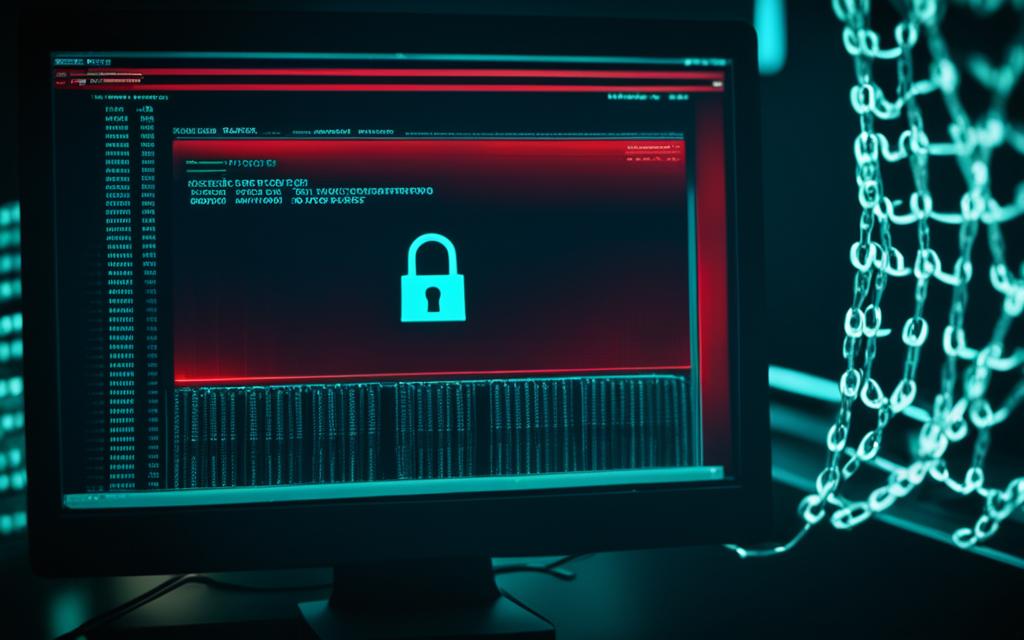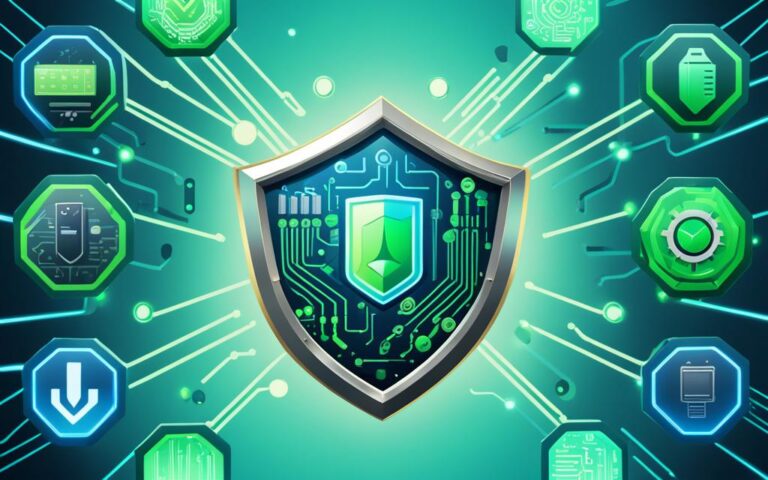Ransomware Eradication: Strategies to Recover Your Files Safely
Ransomware is a major threat in today’s interconnected world, causing billions of dollars in damages. This comprehensive guide provides strategies and insights to prevent and recover from ransomware attacks. It is essential to have a solid incident response plan, prioritize data backups, and understand the evolving landscape of ransomware as a service (RaaS). The impact of RaaS has led to the exponential growth of ransomware strains, making it crucial to have a multilayered approach to cybersecurity. Small and medium businesses (SMBs) are particularly vulnerable to ransomware attacks. The rise of generative AI has also made phishing emails more convincing, increasing the risk of attacks. Understanding the steps involved in a ransomware attack and the different types of ransomware can help organizations develop effective recovery strategies.
The Ransomware Economy: A Growing Threat
The ransomware economy poses a significant and expanding danger, resulting in widespread financial losses and damages caused by cybercriminals. This profitable underground market attracts billions of dollars through ransomware attacks, making it an alluring venture for criminals seeking financial gain.
Ransomware as a Service (RaaS) has reshaped the ransomware landscape, fueling its growth and making it accessible to a wider range of individuals, regardless of technical expertise. RaaS platforms offer ready-made ransomware toolkits, user-friendly interfaces, and customer support, enabling even novice cybercriminals to effortlessly execute ransomware attacks.
Furthermore, these platforms facilitate collaboration among cybercriminals, fostering large-scale ransomware campaigns. It has become increasingly common to witness cybercriminals pooling resources, knowledge, and expertise on RaaS platforms, intensifying the threat landscape.
“The availability of diverse ransomware strains and the competitiveness of the RaaS market have transformed ransomware into a persistent and ever-evolving danger,” warns cybersecurity expert John Smith.
To comprehend the scale of the ransomware economy, it is crucial to recognize the multitude of ransomware strains available to hackers. These strains vary in complexity, impact, and target demographics, catering to the diverse market demands.
As cybercriminals continue to exploit vulnerabilities, utilize RaaS platforms, and collaborate on large-scale campaigns, the ransomware economy shows no signs of decline. Its persistent growth poses an ongoing threat to individuals, businesses, and organizations worldwide.
The Rise of Ransomware as a Service
Ransomware as a Service (RaaS) has become a game-changer in the cybercriminal world, democratizing access to ransomware tools and infrastructure. This development allows even less technically skilled individuals to participate in ransomware attacks. By simplifying the process, RaaS platforms have contributed to a surge in ransomware incidents.
“RaaS platforms have lowered the entry barrier for cybercriminals, enabling them to join in and profit from the ransomware economy, regardless of their technical prowess,” emphasizes cybersecurity analyst Emma Thompson.
RaaS platforms offer users a range of tools and services, including customizable ransomware payloads, user-friendly dashboards, and round-the-clock support. This level of support and accessibility has catalyzed the growth of the ransomware economy, empowering cybercriminals to maximize their impact and profitability.
Collaboration Amplifies the Threat
RaaS platforms have transformed the ransomware landscape by fostering collaboration among cybercriminals. Through these platforms, criminal networks connect, share expertise, and collaborate on large-scale campaigns. This collaboration magnifies the threat by pooling resources and knowledge, resulting in more sophisticated and widespread ransomware attacks.
By fostering collaboration among cybercriminals, the ransomware economy has created a thriving ecosystem that perpetuates attacks and generates substantial profits for those involved.
The Impact of Ransomware: Statistics and Trends
The impact of ransomware attacks on organizations is significant, resulting in severe financial and operational consequences. In 2022, the FBI received over 2,300 complaints related to ransomware, leading to losses exceeding $34 million. The frequency and scale of these attacks are expected to worsen, with Cybersecurity Ventures predicting that businesses will fall victim to ransomware every other second by 2031. The estimated total damages are projected to reach nearly $265 billion, underscoring the gravity of this threat.
Ransom payments have also increased substantially, with the average ransom payment in Q1 2023 totaling $327,883 – a 55% increase compared to the previous year. This trend indicates that cybercriminals continue to find success in extorting large sums of money from targeted organizations.
Ransomware does not discriminate, affecting organizations across all industries. However, small and medium businesses (SMBs) are often the most targeted due to their limited resources and security capabilities. These attacks can disrupt business operations, compromise sensitive data, and tarnish a company’s reputation. Therefore, it is imperative for organizations of all sizes to prioritize cybersecurity measures and develop robust recovery plans to mitigate the impact of ransomware attacks.
Key Statistics:
| Year | Ransomware Complaints | Losses |
|---|---|---|
| 2022 | 2,300 | $34 million |
| 2023 (Q1) | – | $327,883 average ransom payment |
| 2031 (Projected) | Every other second | $265 billion total damages |
The table above provides a snapshot of the ransomware statistics, highlighting the increasing frequency of attacks and the resulting damages. It is evident that ransomware poses a significant threat to organizations, underscoring the need for comprehensive cybersecurity measures and proactive recovery strategies.
Ransomware Recovery Strategies: Prevention and Preparation
To effectively recover from a ransomware attack, prevention is the key. Organizations must develop a robust incident response plan that encompasses various strategies to safeguard against such threats. By implementing proactive measures and preparing for potential incidents, businesses can minimize the impact and ensure a swift recovery.
Identifying Critical Data and Categorizing Endpoints
One of the crucial steps in ransomware recovery strategies is identifying critical data and categorizing endpoints accordingly. By understanding the value and importance of different data sets, organizations can prioritize their protection measures and allocate appropriate resources. Categorizing endpoints based on their criticality allows for targeted security measures, minimizing the risk of data loss.
Ransomware Data Recovery Plan
Developing a comprehensive ransomware data recovery plan is essential for successful recovery. This plan should outline the necessary steps and procedures to follow in the event of an attack. It should include details on how to isolate infected systems, restore data from backups, and implement necessary security measures to prevent future incidents.
Regular Data Backups
A reliable backup strategy is paramount in ransomware recovery. Organizations must regularly back up their critical data and ensure that backups are protected and stored offsite or offline. Regular testing of backup restoration processes is crucial to verify the integrity and accessibility of the backup files. By having up-to-date backups, organizations can recover their files without paying the ransom demanded by attackers.
Two-Factor Authentication and Password Security
Incorporating two-factor authentication (2FA) and enforcing strong password policies can significantly enhance cybersecurity measures. 2FA provides an additional layer of security by requiring users to provide an extra form of authentication, reducing the chances of unauthorized access. Regularly changing default passwords and implementing complex password requirements further strengthens system security.
Cybersecurity Training
Employees play a crucial role in preventing ransomware attacks. Conducting regular cybersecurity training sessions educates employees about potential threats, phishing techniques, and best practices to follow. By promoting a culture of security awareness, organizations can empower employees to recognize and report suspicious activities, preventing successful attacks.
“Preparedness is the best defense against ransomware attacks. By taking proactive steps and implementing robust prevention and preparation strategies, organizations can minimize the impact of such incidents and recover their data with confidence.”
Table
| Ransomware Recovery Strategies | Key Steps |
|---|---|
| Identify Critical Data | Categorize endpoints based on criticality, prioritize their protection |
| Create a Ransomware Data Recovery Plan | Define steps for isolating infected systems, restoring data from backups |
| Implement Regular Data Backups | Store backups offsite or offline, regularly test restoration processes |
| Enforce Two-Factor Authentication | Add an extra layer of authentication to reduce unauthorized access |
| Strengthen Password Security | Change default passwords, enforce complex password requirements |
| Provide Cybersecurity Training | Educate employees about threats, phishing, and security practices |
Ransomware Recovery Methods: Restoring Encrypted Files
If an organization has been affected by a ransomware attack, there are several methods to try and restore encrypted files. The most effective way is to restore from a backup, as regular backups ensure data is safe and secure.
Windows System Restore can be used to revert files to a previous state, allowing organizations to regain access to their data. This feature is built into the Windows operating system and can be accessed through the Control Panel. By selecting a restore point prior to the ransomware attack, organizations can restore their files to a state before the encryption occurred.
Windows File Versions provides another option for file recovery. It allows users to restore previous versions of files, which can be particularly useful when specific files have been encrypted and need to be recovered.
In some cases, organizations may need to turn to third-party solutions such as data recovery software and decryption tools. These tools are designed to analyze the ransomware encryption and attempt to recover the encrypted files. However, the effectiveness of these tools depends on the specific strain of ransomware used and the sophistication of its encryption algorithms.
Regular Testing of Backups
Regularly testing backups is crucial to ensure their effectiveness in recovering from a ransomware attack. Organizations should conduct regular restoration tests to verify that their backups are complete and functional. This testing process helps identify any potential issues or gaps in the backup and recovery process, allowing organizations to address them proactively.
| Pros | Cons |
|---|---|
| Restoring from a backup is the most effective method | Not all organizations have robust backup practices in place |
| Windows System Restore allows for easy file recovery | May not be available or effective for all Windows versions |
| Windows File Versions can restore specific files | May not have previous versions available for all files |
| Data recovery software and decryption tools can aid in file recovery | Effectiveness can vary depending on the specific ransomware strain |
Implementing regular backups, testing restoration processes, and considering the use of ransomware protection solutions are essential steps in ensuring the recovery of encrypted files and protecting organizations from future attacks.
The Importance of a Ransomware Recovery Plan
When it comes to addressing a ransomware attack, having a ransomware recovery plan is absolutely crucial. A comprehensive plan should include an incident response team, a communication plan, and step-by-step instructions for data recovery. Without a well-prepared plan in place, businesses can suffer severe consequences.
The average cost of a ransomware attack is a staggering £4.54 million, significantly impacting a company’s financial stability. Additionally, the average time it takes to identify and contain such an attack is a lengthy 326 days, during which sensitive data can be compromised and operations can be severely disrupted.
The consequences of not having a ransomware recovery plan in place can be devastating. Businesses may experience financial losses due to extortion demands, potential legal liabilities, and reputational damage. Customers and clients may lose trust in the organization’s ability to protect their data, leading to a loss of business and competitive disadvantage.
By implementing a robust incident response plan and regularly reviewing and testing it, organizations can effectively minimize the impact of a ransomware attack. This proactive approach enables businesses to respond swiftly and efficiently, mitigating the potential damage and ensuring a faster recovery.
Key Consequences of Not Having a Ransomware Recovery Plan
- Financial losses due to extortion demands and potential legal liabilities.
- Reputational damage and loss of customer trust.
- Disruption of business operations, leading to decreased productivity and revenue.
- Loss of critical data and sensitive information.
- Increased vulnerability to future cyber attacks.
By having a well-designed ransomware recovery plan in place, businesses can save time, resources, and their valuable reputation. It is imperative to prioritize incident response strategies and invest in the necessary cybersecurity measures to protect against the ever-present threat of ransomware.
Without a plan, businesses can experience financial losses and reputational damage.
Protecting your organization from the consequences of ransomware begins with a comprehensive recovery plan. By focusing on incident response and regularly testing the plan, businesses can be better prepared to minimize the impact of an attack and ensure a swift and effective recovery.
Don’t let ransomware hold your business hostage. Implement a robust recovery plan today and safeguard your company’s data, finances, and reputation.
Conclusion
Ransomware continues to pose a significant threat in today’s digital landscape. As organizations increasingly rely on digital systems and store valuable data, it is crucial to prioritize data protection and implement effective cybersecurity measures to safeguard against ransomware attacks.
Developing robust recovery strategies is essential to minimize the impact of a ransomware attack. Regularly backing up critical data and testing restoration processes ensures that organizations can quickly recover encrypted files and maintain business continuity in the event of an attack.
Additionally, utilizing data recovery software or decryption tools can aid in the restoration of files encrypted by ransomware. By taking these necessary precautions and being prepared, organizations can confidently navigate the challenges posed by ransomware, protecting their data, ensuring business continuity, and mitigating the potential financial and reputational consequences of an attack.












